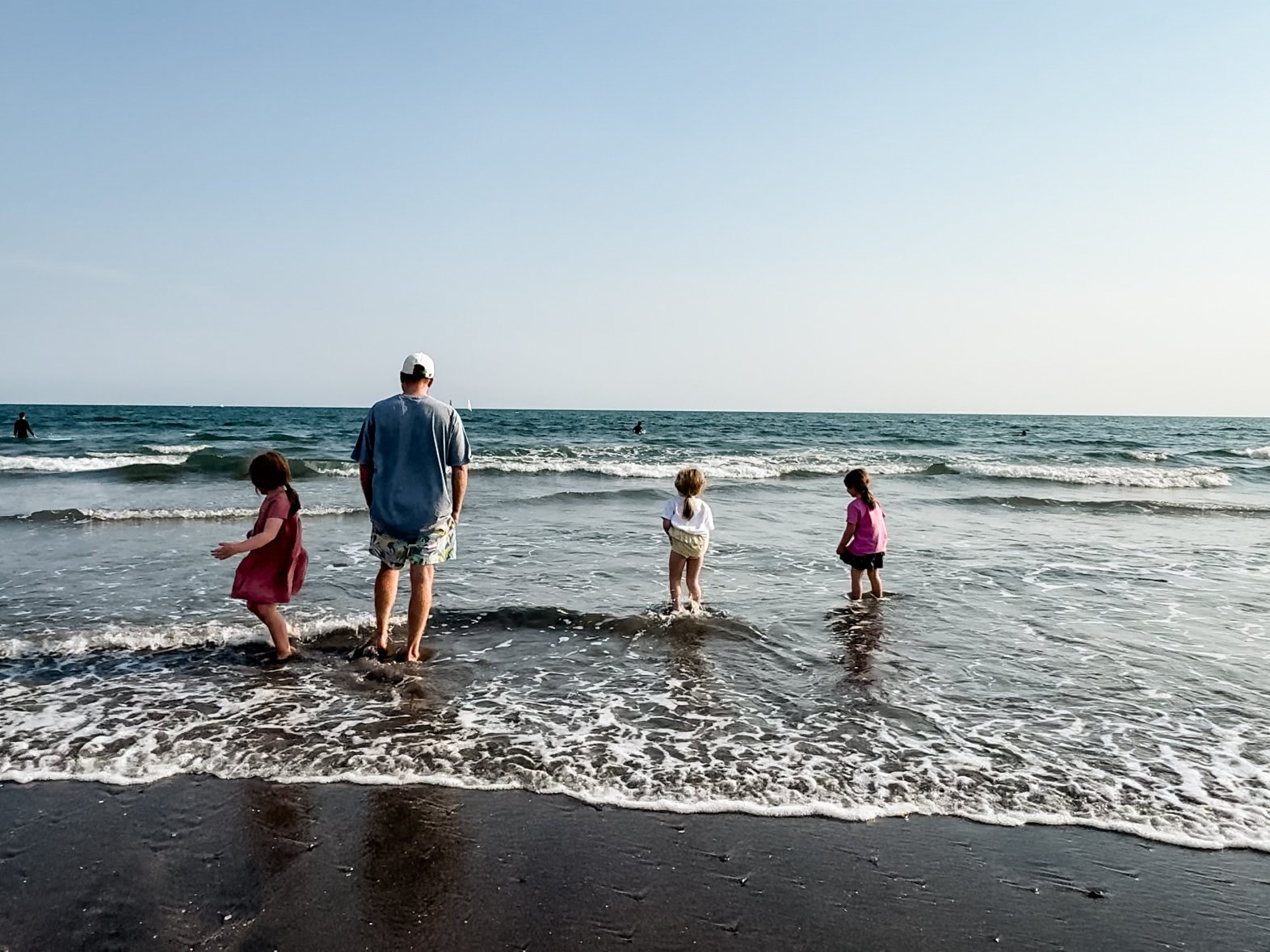Kamakura is a small beachside town, just an hour south of Tokyo. It’s often referred to as Little Kyoto because it was also once an ancient capital of Japan and has so many temples and shrines. However, it also has a very laid back vibe that incorporates Californian and Hawaiian surfer culture to creates a really unique feel that is so far removed from the frenetic energy of Tokyo.
As we were flying out fo Tokyo, I wanted to spend our last few days close enough the Tokyo without going back into the heart of the city. Admittedly, I loved Tokyo way more than I thought I would, we all did in fact. So I’m sure we could have found plenty more to do in Tokyo had we gone back. But what appealed to me about Kamakura was the stretch of beach that we could relax on and unwind a bit after all the travel we had been doing.
It ended up being a good decision. Once we arrived and checked into our accommodation, we headed down to the beach to enjoy the sunset and take in the view. The beach had blackish sand which I believe is typical of beaches in areas with high volcanic activities, and the waves were very small, although there was no shortage of locals out in the surf attempting to make do with the little action they had to work with. During the Summer months of July and August, pop up beach clubs are set up along the beach. We were a month too early but it was interesting to see the construction of the temporary structures getting underway.
We had booked three full day day in Kamakura which was probably a little generous in hindisght, two busy days would be enough, however it rained very heavily on the first day. I stayed in the with the girls an dcaught up on some school work and creative time - Hallie was working on a great story about Godzilla, while Braino went out in search of a laundromat to wash and dry our clothes - we were down to our last clean outfits.
We dedicated our second day to exploring some of the temples and shrines around Kamakura, starting with the Great Buddha of Kamakura. The Great Buddha or Kamakura Daibutsu dates back to the 13th century and is the second tallest bronze seated Buddha in Japan. (the first is the one I saw in Nara). The 11.4m Buddha was quite amazing to see and the girls were particularly excited to be able to go inside the statue.
I had read that there was a hiking track that led from the road next to the Great Buddha and wound it’s way through the hills, between suburban street, past a collection of smaller shrines to the Kamakura train station. So we set off to find the trailhead, which we did quite easily. However, after traipsing through the steep muddy track for 20 or so minutes, we realised we were not even on the right track and had headed in the completely wrong direction. It was a bit of fail on my behalf. Thankfully no one had slipped over, because the mud would have literally ruined an outfit (and probably our day), so we decided to bail on the hike and find a bus stop and head to Tsurugaoka Hachimangu Shrine via road.
We caught the bus back to Kamakura Train Station and walked up Komachi-Dori Street which is a bustling street full of street vendors, restaurants and souvenir shops. This led to Tsurugaoka Hachimangu which is the most important shrine in the Kamakura. This shrine seemed to have a little bit of everything, the sake barrels like Meiji Jingu Shrine, the mini torii gates like Fushimi Inari Shrine. There is even a bamboo grove in Kamakura at Hokokuji Temple, which is similar to the very popular bamboo grove at Arashiyama in Kyoto.










